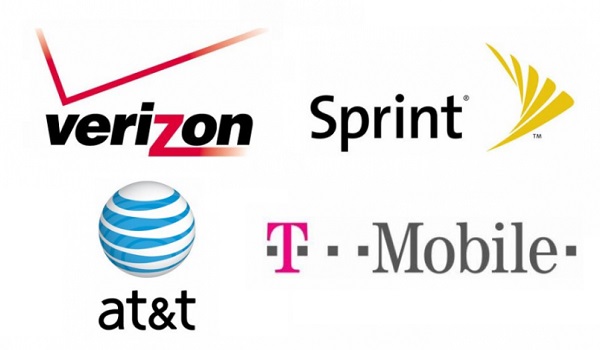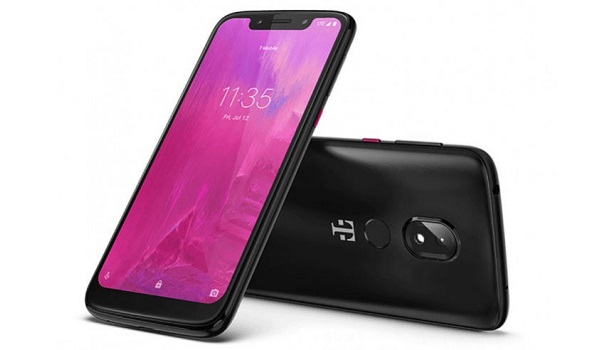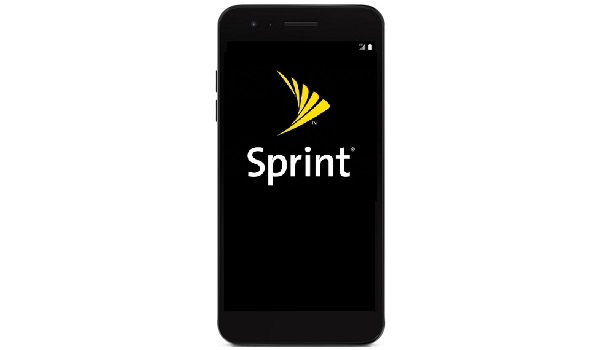You will come to understand terms like cell phones, CDMA, prepaid phones, and more. As a rule, telecom companies in the United States of America, Canada, and Mexico (North American countries in general) use different mobile technologies and frequency bands from the rest of the world.
Mobile phone vs cell phone
Mobile phones is what most of the rest of the world calls mobile telephone handsets, but in America, they are called cell phones. As such, wherever you see the term “cell phone” used anywhere, remember that it means the same thing as mobile phone or handset. All these terms mean the same thing.
What is unlimited data?
In the USA, you will hear lots of mention of the phrase, “unlimited data”. What does it really mean? An unlimited data plan usually means that you won’t pay extra no matter how much data you use. ut that is not all. Often, it has fine prints that usually include a fair usage policy. This policy is often a clause that says when you use data above a certain volume, your Internet connection is throttled i.e. your available speed is dropped, so your browsing is slowed down. Wireless carriers and telecom companies say this is implemented to protect the network and other data users who will be negatively impacted from the activities of some subscribers who binge on data. Slowing heavy users down helps to keep the impact of their usage on the wireless network down.
What does unlimited texting mean?
US wireless networks often also offer unlimited texting. It means that for a fixed monthly fee, the subscriber can text any cellphone in the United States.
What does unlimited talk/call mean?
Unlimited calling means that for a fixed monthly fee, the subscriber can call any cellphone in the United States without any extra charges.
Prepaid phones versus Postpaid phones
What is called a prepaid phone in the USA is what the rest of the world commonly calls pay-as-you-go (PAYG) or prepay phone. In simple terms, it is a cell phone service that requires you to purchase airtime upfront for use. Your usage is then debited from the available airtime. When you run out of airtime, you are unable to use any more services until you top up again. This is applicable to voice, SMS and data. Prepaid phones are purchased without a contract with any wireless carrier by paying the full price of the phone. Going prepaid makes it easier for users to control their mobile usage and expenses since all bills are paid upfront. To obtain a prepaid cell phone, you do not require a credit check or deposit. Note that prepaid phones are also often referred to as unlocked phones. This is because they are not locked to a particular network and so you can simply use them on another wireless carrier should you choose to switch carriers. There are individuals who do not want to be bothered with the distractions of running out of airtime and having to top-up, so they opt for a contract phone, or what Americans call postpaid cell phone. How does this work? The user enters into a contract with the mobile wireless carrier to pay for the cost of the phone, airtime and data in a bundle. The contract may run for as short as 12 months or as long as 24 months. The subscriber then pays an agreed monthly sum for the duration of the contract. This is how many Americans purchase their smartphones and pay for their mobile services. Like any credit-based system, the key advantage of a contract phone service is that the subscriber does not need to spend a huge amount of money upfront. A contract plan allows you to talk, text and use data without any initial deposits, and then your costs are tallied up at the end of each billing cycle (usually monthly) and then you are billed. If a phone is included in your contract, the monthly bills include both the cost of the phone and service spread out over the duration of the contract. Of course, a contract costs you more in the long term, despite its convenience. That convenience is a special service that comes at a price. If you buy a contract phone, adding up your total costs will show you how much more you are paying compared to if you pay fully for the phone upfront. Contract plans are great ways wireless carriers and telecom companies make money. Credit checks and a deposit are required to obtain a contract phone plan. Note that contract phones are usually locked to their origin network. If you want to switch to use your contract phone on another wireless carrier, you need to pay up your outstanding contract and then have the phone unlocked. Otherwise, the phone stays locked to the origin carrier and will not work elsewhere.
American Cell Phone Companies: US Telecom Companies, Cell Phone Wireless Carriers and Providers
US telecom companies use certain wireless frequencies that are not common elsewhere in the world. These frequencies include 800 MHz, 850MHz, and 1900 MHz. The good news is that in recent years, most smartphones sold by US carriers offer these frequency bands in addition to the more common 900MHz, 1800MHz and 2100MHz bands used elsewhere in the world. The USA has 4 national wireless carriers, namely: Verizon Wireless, Sprint, AT&T Mobility, and T-Mobile. These four networks offer nationwide coverage. There are a number of other wireless operators that provide regional service. Whether national or regional, all US wireless carriers are split into two camps based on the technology they deploy: CDMA and GSM. Here is where the 4 major carriers fit in:
CDMA networks: Verizon, SprintGSM networks: AT&T, T-Mobile
GSM phones do not work on CDMA networks, and CDMA phones do not work on GSM networks. Most of the rest of the world uses GSM networks, so if you are importing a cell phone into the USA for use, you need to be sure which networks the phone supports. Buying a prepaid GSM phone for use when you are on a CDMA network is a recipe for tears. It won’t work. Travellers to the USA need to bear this in mind too, and so do businesses that are looking to import smartphones from the USA. There have been reported cases over the years of individuals who purchased a mobile phone in the US, not knowing that those phones are CDMA, and when back in their own countries, found those phones useless on their countries’ GSM networks. Having explained that, let us look at the biggest mobile wireless carriers in the USA.
Verizon Wireless
Verizon Wireless is a CDMA network with national service and coverage. It is also the largest telecom company and mobile wireless carrier in United States. Beyond its CDMA network, Verizon also offers 4G coverage across the country and is one of the first operators to deploy 5G service in the United States. Verizon offers both contract and prepaid phone services. What kind of contract phones can you get from Verizon? As the largest wireless carrier in the United States, pretty much any kind. Even better is the fact that Verizon offers dual-mode cell phones and handsets that support both CDMA and GSM mobile standards. That means that a Verizon phone is likely to be usable outside of North America. What sort of plans and bundles does Verizon offer? The carrier has plans that cover everything, including voice, text, “unlimited data” .
AT&T
AT&T is a GSM network operator and the second-largest mobile wireless carrier in the United States after Verizon Wireless. The network also provides extensive 4G LTE coverage, and is also one of the first to deploy 5G services in the country. Because AT&T is a GSM network, using an AT&T smartphone outside of the United States should not pose too much trouble as long as it is a quad-band GSM phone. Quad band GSM phones support both GSM bands used in the US and those used elsewhere in the world.
T-Mobile
T-mobile is a GSM network operator with national coverage in the USA. It also offers 4G LTE and 5G services. A unique factor with T-Mobile is that it stopped offering contract services and is now completely prepaid. While contract subscriptions are out the window, the carrier still allows subscribers to pay for their cell phones in instalments. Being GSM devices, T-Mobile smartphones should be usable widely outside of America, as long as they are quad-band GSM phones. Quad band GSM phones support both GSM bands used in the USA and those used elsewhere in the world.
Sprint
Sprint is a CDMA carrier and a wholly-owned subsidiary of T-Mobile but still operates under its own brand name, though it may be phased out eventually and take on T-Mobile branding. The network offers voice, text, and data (including 4G LTE and 5G). Update: The Sprint brand name has been dropped and the network is now fully known as T-Mobile.
Other American Telecom Companies And Wireless carriers
Besides the big 4, the other available US network carriers include: US Cellular, Virgin Mobile, Boost, Cricket Wireless, MetroPC, among others. All of these listed networks are CDMA cellular carriers and some of them are mobile virtual network operators (MVNO). A mobile virtual network operator, by nature, piggy-banks on another carrier. It does not own its own wireless network infrastructure, but provides services by using another’s, usually one of the big 4 wireless carriers.
U.S. Cellular
This regional operator covers 26 states in midwestern USA on its own CDMA network. It offers both prepaid and contract phone services and has 4G LTE service as well. While U.S. Cellular is available only in about half the states in the USA, you can use their service outside of their coverage states, thanks to roaming agreements with other wireless carriers. Because U.S. Cellular is a CDMA network, using their cell phones outside of North America can be problematic, unless it is a dual-band phone i.e. it supports GSM networks.
MetroPCS
MetroPCS is a sub-brand of T-Mobile. The carrier operates its own regional CDMA network and offers only prepaid phone services. Its core target market is the budget segment. Similar to U.S. Cellular, you will be ab;le to use a MetroPCS service nationwide outside of its own coverage area, thanks to roaming agreements with other mobile wireless carriers around the country.
Cricket Wireless
A subsidiary of AT&T, Cricket Wireless operates its own regional CDMA wireless network. It also provides 4G LTE service. Cricket also has roaming agreements with other wireless carriers so you can use your subscription when outside of its coverage area in the United States. Cricket is a budget carrier, providing entry-level and mid-range smartphones to its subscribers.
Virgin Mobile
Virgin is a subsidiary of Sprint and does not operate its own network infrastructure. In other words, it is a mobile virtual network operators (MVNO). It rides on Sprint’s wireless network to provide prepaid phone service for voice, text, and data (including 4G LTE service).
Boost Mobile
Boost Mobile is a CDMA carrier and a subsidiary of Sprint. It is a mobile virtual network operators (MVNO), meaning it does not have a wireless network of its own. It runs on Sprint’s network. Its unique selling point is that its products and services are targeted at the budget consumer. As such, Boost Mobile offers entry-level and budget smartphones and does not provide any phone services on contract. What kind of mobile services does Boost Mobile offer? Voice, text, data (including 4G LTE). As a CDMA carrier, using a Boost Mobile phone outside of the USA might be problematic, unless it is a dual-band phones i.e. it supports GSM networks too. Having seen the available US wireless carriers and the services they offer, let’s have a look at US phone numbers and how they are formatted.
American cell phone companies: US Mobile Phone Brands
The United States is home to some of the world’s leading mobile phone brands, as well as some smaller ones. American cell phone brands include:
What does a USA phone number look like?
The standard American telephone number is ten digits in length, and grouped in batches. An example is this: (777) 123-4567. The group that contains the first three digits (777) is called the area code. It is always put in parentheses and was designed to tell you what geographic region of the country the telephone line was located. The next group is separated with a hyphen and has three digits. This group of numbers is called the exchange or central office code. It further pins down the location of the number some more. Lastly, we have another group that contains four digits. This is the line number. It is what ties the telephone number down to a specific phone line. So, a number like (777) 123-4567 contains the area code, exchange code, and line number, making it easy, at first glance, to at least identify the generic location of origin of the number in question. A simple way to look at it is to think of the three parts like a street address, where the area code is the city, the prefix is the street name, while the line number is the house number. That’s it on this guide! If you have any questions about US wireless carriers, as well as phone services and numbers, that isn’t answered in this guide, or if you need further clarity, do ask using the Comment box below, and a member of our team will respond with a helpful answer.


![]()

